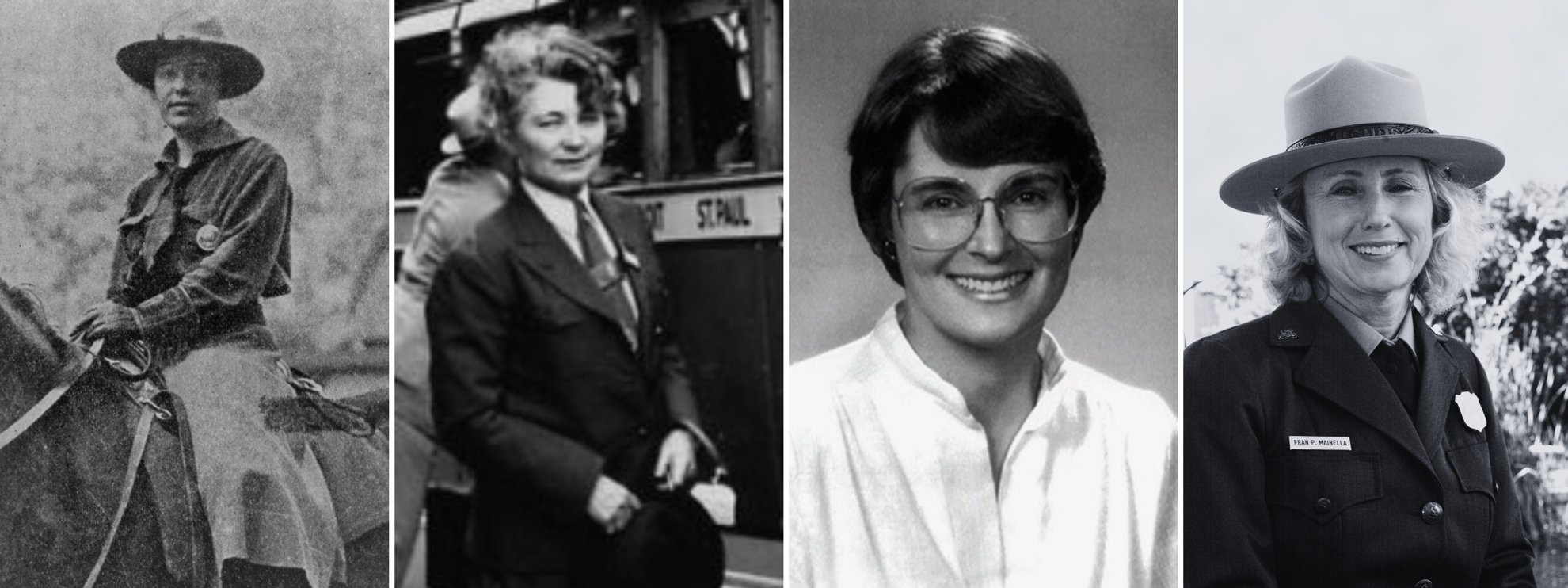At Adventures in Good Company, we believe that nature is not just a fun destination; it’s a shared space shaped by the women who dared to explore, protect, and pave the way before us. During National Forest Week, we’re shining a light on the women who helped build and defend the U.S. Forest Service and the millions of acres of public land we now explore together.
The Early Pioneers
While forestry and park management were once considered predominantly male fields, women began making their mark much earlier than many realize.
In 1918, Clare Marie Hodges became the first woman to serve as a fully commissioned park ranger in Yosemite National Park. A local schoolteacher with deep knowledge of the area, she took on the same duties as her male counterparts: patrolling on horseback, managing park operations, and even delivering gate receipts. Her brief but trailblazing service opened the door for women in the National Park Service.
One of the earliest and most influential voices in forestry education was Margaret March-Mount, known as the "Ambassador of Trees." Throughout the 1920s and 1930s, she traveled the country promoting reforestation and soil conservation, inspiring a generation to care for the land.
In the 1940s, Helene B. Wilson broke barriers in the U.S. Forest Service as one of the first women to serve in a ranger capacity, patrolling trails, assisting with fire control, and conducting fieldwork in uniform, long before such roles were common for women.
Later, in 1979, Wendy Milner Herrett made history as the first woman appointed as a district ranger in the U.S. Forest Service, stepping into a formal leadership role in land management and operations that men had long held.

Breaking New Ground at the National Level
While many women shaped the U.S. Forest Service from within, others helped redefine leadership across the broader public lands system. In 2001, Fran Mainella became the first woman to serve as Director of the National Park Service. This historic milestone paved the way for more inclusive representation in federal land agencies.
During her tenure, she championed efforts to keep parks relevant and accessible by focusing on youth engagement, education, and public-private partnerships. After leaving the NPS, she continued to advocate for outdoor access and environmental education through organizations like the Children & Nature Network and the U.S. Play Coalition.

The Modern Movement
Today, women play critical roles in forestry, from wildfire science and ecological research to land policy and recreation planning. Another forestry trailblazer is Abigail Kimbell, who in 2007 became the first female Chief of the U.S. Forest Service. Under her leadership, the agency placed greater emphasis on ecological resilience, sustainable forest management, and collaborative partnerships with local communities. Her appointment marked a turning point in the agency’s history, paving the way for future women leaders in public lands stewardship.

Why This Legacy Matters
Understanding the role women have played in shaping our national forests deepens our appreciation for the trails we walk today. It also reminds us that stewardship is a shared, ongoing responsibility, one that connects past pioneers with present-day adventurers.
When you hike with Adventures in Good Company, you’re stepping into a long tradition of women who have protected and studied these forested places. Our trips are more than vacations; they’re acts of connection to the land, to one another, and to the generations of women who came before us.
With each guided hike, we celebrate the resilience, leadership, and joy that women bring to the outdoors. We believe in adventure as a powerful form of empowerment and in forests as places where women can rediscover their strength, purpose, and sense of wonder.
As we walk along trails lined with towering trees and lush greenery, we carry with us the stories of the women who helped shape these landscapes and the inspiration to keep their legacy alive.



